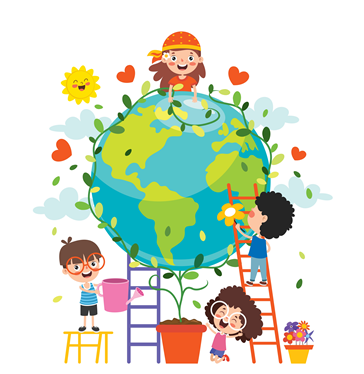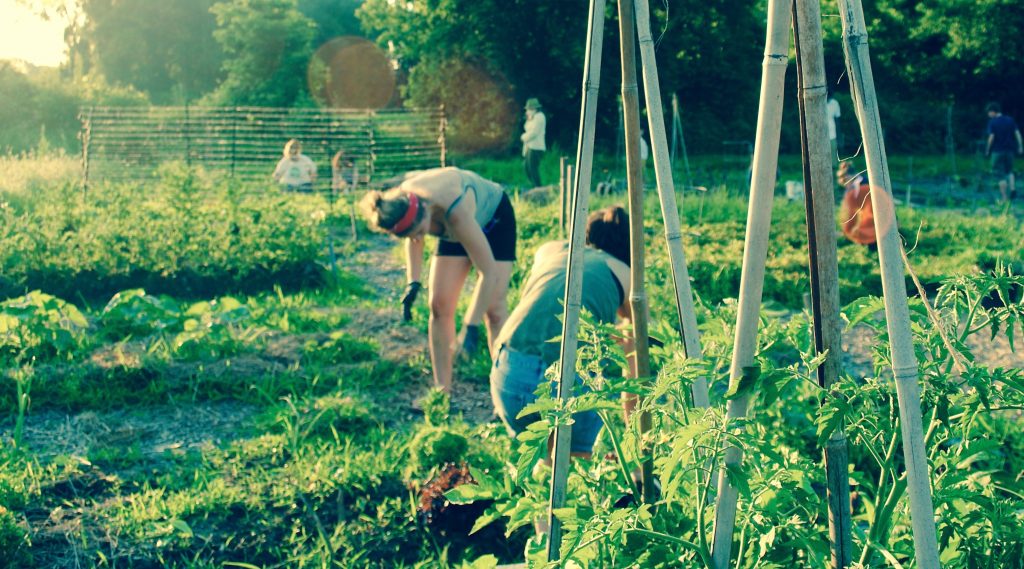
Outdoor learning experiences benefit the young and old alike, and when they are accessible, they can have a very positive impact on the local community. An urban garden provides that convenience and lets you get even more out of an already worthy project.
Sure, there is the direct benefit of growing produce for food banks and farmers markets. But the garden is an instant classroom setting that provides a wealth of learning opportunities for all walks of life. It is also one that helps create a truly self-sustaining community that will grow for generations to come. Today, our Foundation is here to shed some light on how you can turn your plot into a place of learning.
Four Ways to Create a Community Garden Learning Environment
How to Turn a Community Garden into a Learning Garden Tip 1:
Establish it in an Accessible (for Education) Location
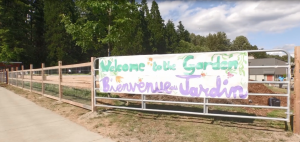
If you have yet to establish your location, consider one that offers favorable population density. The more people that can visit your garden, the greater your reach. Look to existing projects for inspiration. In North Vancouver BC, Sutherland Secondary School together with the Edible Garden Project, the North Vancouver School District, the City of North Vancouver and our own Foundation was able to establish a community learning garden that provides an outdoor classroom for the local school and neighboring community alike.
How to Turn a Community Garden into a Learning Garden Tip 2: Have Volunteers on Site
Make sure that volunteers and anyone working on the garden are approachable. Visitors should feel as if they can walk up and ask questions about the project. Having matching “branded” (unique to your garden) t-shirts are a fun way to help visitors identify your team, but even simple name tags will suffice.
Of course, having someone on site may not work when you’re strained for volunteers and resources. Instead, host daily or weekly information sessions that invite people to come by to learn more about your project. Be sure to post a notice on-site and on your community garden’s social networks (and website, if you have one) so that community members know when to stop by and bring the kids.
How to Turn a Community Garden into a Learning Garden Tip 3: Post Engaging Information on Crops (and More)
Most gardens have small signs naming the plant being grown within a bed. If your visitors walk up to a bed of kale and only see a sign that says “Kale”, you’re not taking full advantage of the opportunity to educate. Instead, provide them with more information, letting them know that kale is a fantastic source of calcium, antioxidants, and is also an excellent cold weather crop. Every plant has a story. Tell it within your community garden.
Go beyond the traditional. For instance, visitors may look at bees and other insects on the site as a sign of an unwelcoming environment. What they may not realize, is that those perceived “pests” are actually there for a good reason. Print and post (on a shed or fence) a guide to beneficial bugs so that they grow to understand that the critters found in your community garden are there to support the system.
In addition, include details about how your garden applies to the food to table concept to help battle food insecurity in your locale. If the produce goes to support a local food bank, provide those details. If the food goes to a local farmers market, with proceeds being put back into sustainable initiatives, breakdown that process for onlookers. It’s one thing for children (and other visitors) to learn about the crops and the surroundings, but a whole other to show them how your project directly benefits those in their own community. Again, this information can be posted on your garden shed or on signs in other common areas. You may also consider informative takeaway pamphlets, printed on recyclable paper, of course.
How to Turn a Community Garden into a Learning Garden Tip 4: Set Up a Community Garden Library Exchange
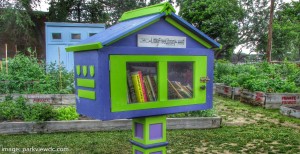
Another easy way to add an element of education to your project is to build a free library exchange. You can place it within your common area, include seating to encourage visitors to stay on site and read, and load it up with engaging books on gardening and other topics that are important to your initiatives. View more on how to set up a free library exchange in your urban garden.
You can go beyond this direct concept too. For example, a garden in Alberta together with the local food bank is providing activity totes that are interactive and correlate to the school curriculum.
How to Turn a Community Garden into a Learning Garden Bonus Tip: Avail of the Foundation’s Free Educational Resource Kits
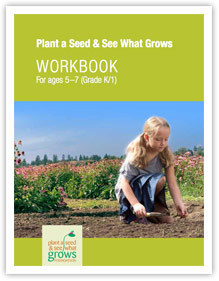
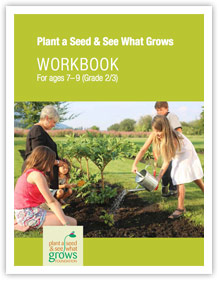
Our Foundation provides free comprehensive resource kits in English and in French for primary grades that comes in two versions: one for K to Grade 1, and the second for Grades 2 and 3. A typical kit includes everything students need to discover and discuss the life cycle of plants: the beautifully illustrated hardcover children’s books written by Roland Gahler; 26 paged full-colour workbooks for the applicable grade cluster: K-Gr. 1 or Gr. 2-3 which guides students through an exploration of the life cycle of a plant grown from seed; organic seeds and colouring books.
The Foundation’s resource kits are gateways to encourage further exploration. Schools can visit a farmers market or local grocery store and discover what happens with plants after they’re harvested. They can visit a local farm to learn about this industry and how plants are grown and harvested as crops.Young students will be able to trace the economic pathway from the seed to a serving of food on one’s table. Kids will also learn about various nutrition labels such as organic or non-GMO and what they tell us.
L’Ecole Bilingue, Vancouver, BC; Porter School, Coquitlam, BC; École communautaire La Croisée de Robertville, NB; Port Weller, St-Catharines, ON are just some of the schools who are currently using these great resource kits. In fact, even not-for-profit organizations such as Hives for Humanity, BC and Growing Up Organic, ON are also using our resource kits in their educational outreach projects. If you’re interested to avail of these materials, please email us at info@seewhatgrows.org
The possibilities are endless when you apply your imagination on how to add education to your community garden.
Do you know of any other community garden learning concepts that you would like to share? We’d love to hear about them! Follow our Foundation on Facebook, Twitter, and/or Google+, find this article on our recently published posts and leave a comment.
Please visit this link to learn more about our work in Canada and be a Friend of the Foundation.

